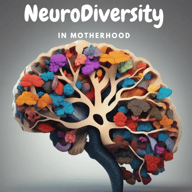Mother Seeking a diagnosis of Autism Spectrum Disorder (ASD) for your Child


Navigating the journey to obtain a diagnosis of Autism Spectrum Disorder (ASD) can feel overwhelming; mum, if you have not had the diagnosis as yet, here's a practical guide to help you through the process:
Recognise the Signs and Symptoms and Document your concerns
Empower yourself by being aware of the common signs of ASD, which can vary from child to child. Some key indicators include Social Interaction Difficulties, Communication Challenges, Repetitive Behaviors, Sensory Sensitivities, and more.
If you notice these behaviours in your child, it may be time to seek professional advice. Keep a detailed record of what you are worried about as soon as possible. Write specific examples of any concerns, including the frequency, etc. This written information can be vital during assessments and for monitoring.
Speak with Healthcare Professionals
Contact a healthcare professional, such as your child's paediatrician or family doctor, to discuss your concerns, and should be done as early as possible. Express your concerns, bring videos, notes, and photos to the consultation as evidence, and ask for guidance on the next steps. Many primary care doctors are mindful of early diagnosis and provide screenings or referrals to specialists as soon as possible.
A diagnosis of ASD typically involves a comprehensive evaluation by a specialist, including:
Child Psychologists or Psychiatrists
Developmental Pediatricians
Neurologists
Ask for referrals from your child's paediatrician or look for specialists within your area who have experience with autism assessments.
Prepare for the Evaluation
The evaluation process may include interviews, questionnaires, and standardised assessments. It's helpful to prepare yourself and your child for the evaluation and to ensure they are comfortable and calm. Familiarize yourself with what to expect so you can support your child through the process.
Involve Family Members and Caregivers
Ask for insights from those who regularly interact with your child, such as family members, teachers, daycare providers, or other family members; remember, their observations can conform to or not conform to your concerns and also can provide a more comprehensive view of your child's behaviours and strengths.
Understand the Diagnosis Process
Patience and proactiveness are key during the diagnostic process, as finding the proper support for your child often takes time. This process involves multiple sessions and various assessments, so be prepared.
Emotional Support
Seeking a diagnosis can be an emotional journey for yourself and your whole family; it's essential to connect with support networks, whether through family, friends, or organisations focused on autism. Please, mum, don't isolate. Consider joining local or online support groups to connect and share experiences with other mothers raising a neurodiverse child. Connecting with mothers like you who are facing the same challenges can make you feel understood and less isolated, providing a sense of community and shared strength.
Advocate for Your Child from Day 1.
Being your child's advocate throughout the process is a golden rule; depending on the severity of your child's condition, it will be your mission in life. Our children's well-being is paramount, and our persistence can make a significant difference in their lives—the sooner, the better. Remember, you are not just a mother but a powerful advocate for your child's needs.
Follow Up on Recommendations
Once you receive an official diagnosis, work closely with healthcare professionals to create a personalised support plan for your child. You must also be involved with the educational plan if you have a school-age child. Depending on your family's financial state, follow the official diagnosis, explore financial resources available, and understand your insurance coverage, as these can help offset the costs of treatments and services.
Conclusion
Neuroplasticity could be the biggest allay of your child's neurodevelopment; if you don't know yet about neuroplasticity, I urge you to learn about "neurodiversity in a child's brain" to understand the importance of a yearly diagnosis and intervention among children with ASD. Neuroplasticity is one strong reason why early intervention is powerful among children with ASD and is because it can change the landscape of your child's brain and potentially improve their quality of life significantly.
The path to an ASD diagnosis for your child involves careful observation, informed action, and seeking professional guidance sooner rather than later. Remember that you're not alone in this journey, and advocating for your child is a decisive step toward understanding their needs. The sooner you can identify and address children's needs, the better their chances of improvement and the better the quality of life for your child, yourself, and your family.
